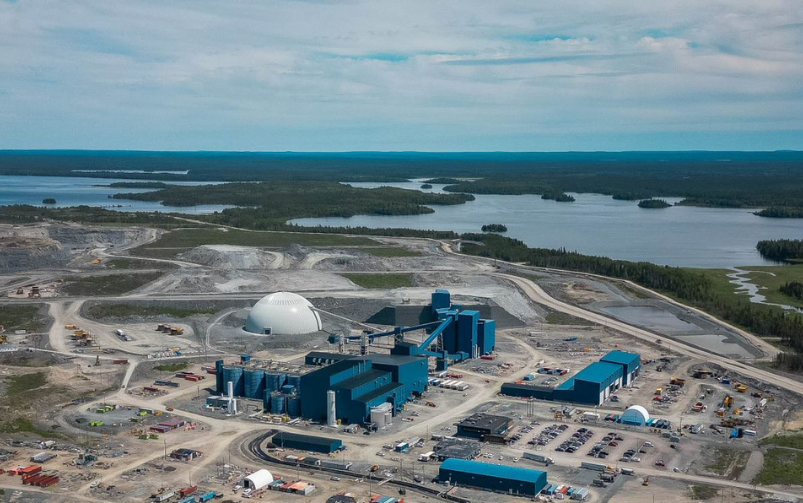Once commercial production is reached at the second phase of the Jansen project in 2029, it is expected to produce around 8.5 million tonnes of potash per year. Courtesy of BHP.
BHP announced on July 22 that the first phase of its Jansen potash project has surpassed the halfway point of construction and is 52 per cent complete. The second phase is also under way at the mine, which is located about 140 kilometres east of Saskatoon, Saskatchewan.
First production at the mine is anticipated for 2026, with an estimated output of 4.2 million tonnes of potash per year. Production from the second phase is forecasted to begin in 2029, at which point the mine is expected to produce around 8.5 million tonnes of potash per year.
Karina Gistelinck, BHP’s asset president of potash, told CIM Magazine in an interview that critical path activities, such as the underground development of the mine, the shaft build-up and the construction of supporting infrastructure, have all been completed. The focus now will be on completing the mill building and processing plant, port construction, finalizing infrastructure and preparing to handover the project to operations.
“[At first], we were scheduled to have first production out by 2027, and now with that halfway mark met, we can actually confidently say our first potash will come out … in 2026, which means we're ahead of schedule,” said Gistelinck.
This milestone has not come without its hurdles. Gistelinck said that the company has felt the impacts of Canada’s construction labour shortage. She added that 5,500 jobs have been created at Jansen during construction, and once fully ramped up, the project will have 900 full-time, permanent jobs on site to help run the mine.
Saskatchewan's strong and persistent winds have been another challenge, she said, adding that a lot of the big lifts being performed at the site were impacted by the consistent winds in the area.
“We’ve been able to respond to that very well,” Gistelinck said. “One of the things that the team has done is actually adapted the shifts of our crews to be able to hit those windows where the wind is a bit lower, which tend to be in the early morning and just before the evening.”
Of all the hurdles BHP has faced so far during the development of the Jansen project, the sinking of its two shafts was a significant obstacle to overcome considering it can be one of the most risky parts of a greenfield project.
In October 2022, the team at Jansen successfully completed the excavation and lining of two 1,000-metre-deep shafts at the mine. The team devised a novel method for sinking the shafts, which are the largest of their kind in the province, by artificially freezing the ground at the site to a depth of 800 metres. This approach effectively stopped water from entering and maintained ground stability during shaft excavation, and it also represented the world’s first instance of mechanized shaft sinking.
“In our view, [the method] adds a lot of synergies as you operate because you don't have all of that moisture and the interaction of the soil going into your mines, which, again, also helps us with having a safer environment down there for our colleagues,” she said, adding that these advantages will also improve productivity once the mine is in operation.




